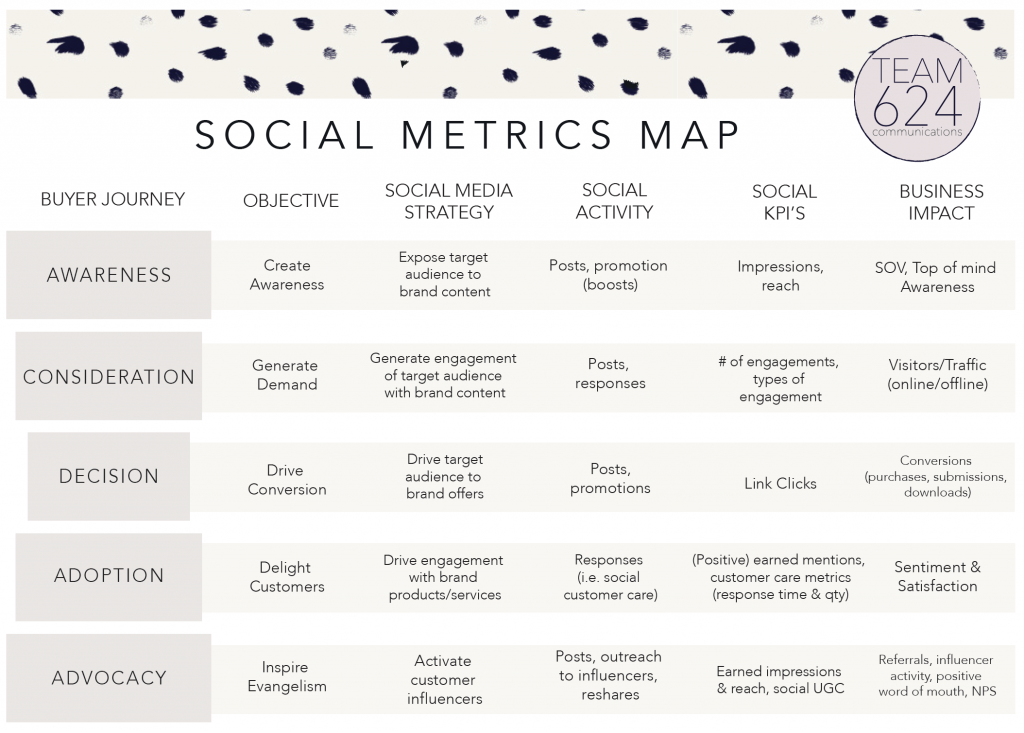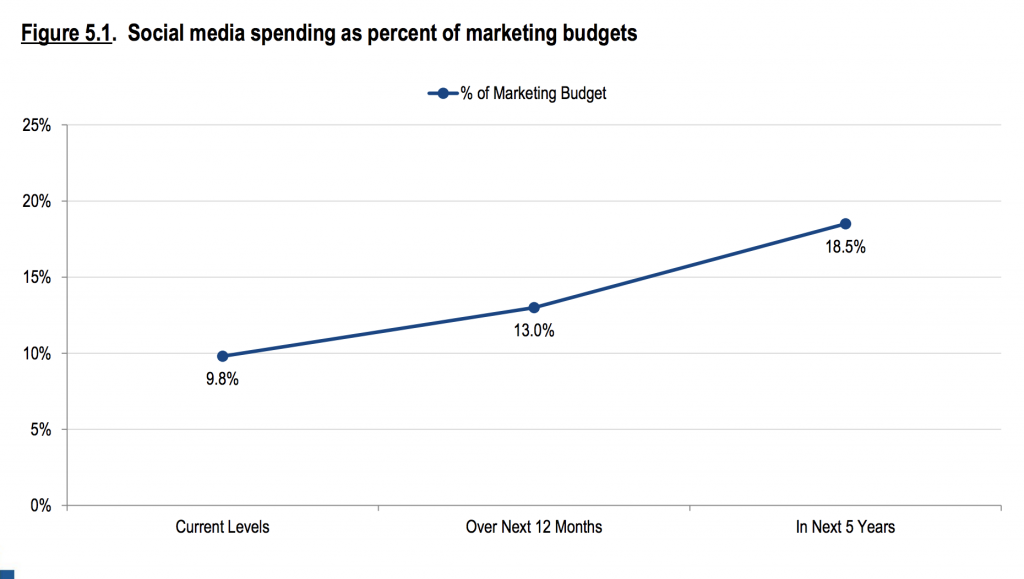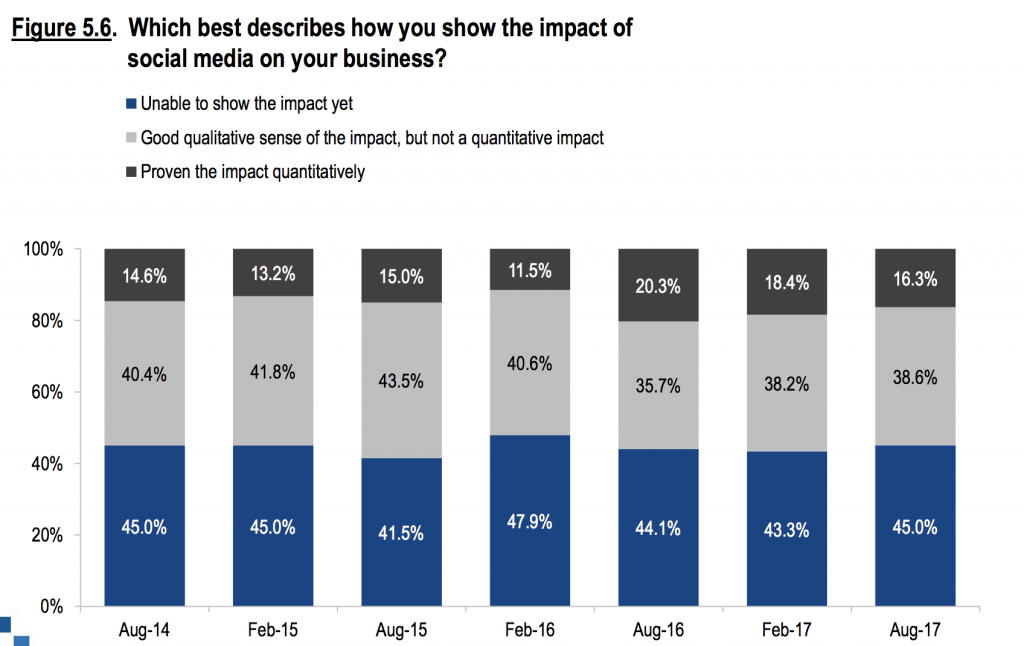According to a 2018 industry report by Social Media Examiner, 87% of all marketers indicated that their social media efforts generated more exposure for their businesses and 78% reported increased traffic to sites. Perhaps most importantly, more than half of marketers who’ve been using social media for more than 2 years reported it helped them improve sales.
However, as brands begin to see greater results and budgets increase, more pressure is put on marketers to prove ROI, stay ahead of the competition, and strategically align their efforts with business goals. Given these realities, it is more important than ever to assess your social media strategy and make sure it’s working for you. Below you will find 9 components that are critical to a successful social media strategy.
1. Perform an audit of your current social media practices
What is a social media audit?

Perform an audit of your current social media practices
An audit is a detailed look at current social media practices. Digging into the numbers will provide a clear look at what’s working, what’s failing, and what to improve. This lays the groundwork for identifying your goals and the steps required to reach them. It’s also an important way to identify opportunities and challenges.
According to Social Media Examiner, only 42% of marketers were able to keep a measure of their social media marketing activities. But how can you get the most out of your social media program if you don’t know what’s working?
Your audit should include the following:
- A list of all owned platforms with handles and login information.
- A list of your most engaged followers
- Calculation of your engagement rate
- Content performance, recorded by asking the following questions:
- What type of content performs best? The worst?
- What time and/or day get the most engagement?
- What is your current post frequency?
Getting started on an audit can be a little overwhelming, so here are a few resources to help:

Social Media Strategy Audit Resources
2. Perform a competitive analysis
Once you’ve reviewed your own practices on social media, it’s time to look at competitors. This is a good way to see how you compare, and can also be helpful in identifying industry standards, trends, and threats. The first step is to identify which competitors you want to research. Pick 4-5 competitors, including brands that are bigger and smaller than yours.
For each competitor, ask yourself the following questions:
- How are your competitors using social media? Include a list of all platforms they are on, how active they are and what type of content they are sharing.
- How many followers do they have compared to you? And what is their engagement rate?
- How is their content performing? What types of content perform the best?
- How do they engage with their followers?
It is often difficult to see everything competitors do. Here are a couple tools to help with your research:
3. Identify your goals and objectives
The cornerstone of any strategy is understanding what you are trying to achieve with your social media marketing. Without this, it’s easy to get caught up in the daily activities of content creation and posting while forgetting why you are doing all of this work in the first place.
The best goals are written and posted in a place you will see them every day. They should guide all of your campaigns, content creation, and community management activities.
To identify your social media goals, start by asking yourself the following questions:
- What are my overall business objectives?
- How can I use social media to align with these objectives?
- What does my audience expect from me?
- What do I really want from my social media efforts?
- Are my goals measurable?
The Metrics Map chart below is a great tool to use in aligning your business goals with specific social media activities. For example, to drive more traffic to your site from Instagram, you’ll need to set goals that relate to increased awareness and increased demand.

Social Media Strategy Metrics Map Chart
The map’s recommended social KPIs for these stages are impressions and engagements. Now that these metrics are identified, you can create S.M.A.R.T Goals for each of these buyer stages.
4. Build an audience persona(s) to target the right customer
An audience persona is a research-backed profile of your ideal customer. A whopping 70% of people in North America use social media every day, but that doesn’t mean that you want to speak to all of those people. An audience persona will profile your ideal customer.
Furthermore, 80% of consumers say they are more likely to do business with a company if it offers a personalized experience. Personas also help to identify authentic and personalized opportunities to reach your customers through social media.
Use research and data from your social platforms, Facebook Audience Insights, Google Analytics, and your internal sales tools or CRM to find out more about your customers. While you are digging, ask yourself these questions:
- What are the customer demographics?
- What are this person’s challenges, goals, values, and fears?
- How do they interact with social media?
- What social activities (platforms, hashtags, accounts) should be used to reach them?
- What is your persona’s name?
- What is the visual representation of this person?
Here are a couple resources to get started building your audience personas:
5. Define your brand voice and visuals on social media
Showing up consistently on social media is an important tactic to increase trust and brand awareness among your audience. Consistent use of color alone can increase brand recognition by up to 80%. It can also help to drive revenue: consistent presentation of a brand increases revenue by roughly 23%, according to Lucid Press.
Your social media strategy should outline the look and sound of your brand across different platforms by identifying and recording the following items:
- Brand Voice. What does your brand sound like? What words would you use to describe your brand’s voice? Is it silly, fun, professional or thoughtful?
- Grammar and Terminology. How does your brand follow grammar and punctuation guidelines? What words or phrases do you embrace and which ones do you avoid?
- Post formatting. What do your posts look like? Do you break lines often or write in one paragraph? Do you write long-form posts or keep it short? Do you use emojis?
- Hashtag usage. How are you using hashtags and what do they look like within a post?
- Visual guidelines. What type of photos do you share? Is there a certain filter that you use? How should social graphics look?
Here are some helpful resources to identify your brand guidelines for social media:
6. Build a content strategy for the types and amounts of posts you’ll share

Social Media Strategy Rule of Thirds
With a strategy framework outlined, you can start to detail the tactics required to engage your ideal customer, reach your goals, stand out from the competition, and reinforce your brand. Your content plan is the primary way to achieve all of these things. In 2018, marketers plan to increase their use of videos (77%), visuals (68%), live video (63%), blogging (57%), and podcasting (25%), in that order.
Social media content should be a mix of different types of content. One helpful guideline is the Rule of Thirds, which states that content should be ? promotional, ? curated and ? engagement based. Identify types of posts that fall into each of these categories. (There are some ideas in the chart above.)
Next, create a calendar to identify key dates and authentic opportunities to share content from each category. Pay close attention to make sure you aren’t overloading your feed with promotional content.
7. Integrate your social media strategy with other channels
In today’s marketing environment, an integrated approach drives results. A well-integrated and customized campaign can boost effectiveness by 57%, according to AdReaction: The Art of Integration. This isn’t surprising, considering that 86% of shoppers are regularly channel-hopping across at least two channels (CommerceHub).
Despite all of this evidence, marketers are still struggling to integrate their channels.
Make a plan to cross promote your social media content. Your strategy should outline how you will share and promote social content via email marketing, website, direct marketing, and any other channels you are utilizing.
8. Identify the budget, tactics, and tools required to achieve your goals

Identify social media strategy budget, tactics, and tools
Almost all marketers report to someone, and that someone is going to want to know how much your strategy is going to cost. Although budgets differ across companies and industries, most companies spend about 5% to 15% of annual revenue on marketing. Social media is becoming a bigger piece of companies’ marketing mix. Social media spend is expected to increase 89% in next 5 years (see graph above).
Aside from your team (either internal or external), a social media budget should include resources for:
- Creating content
- Paid social promotions
- Influencer campaigns
- Social media management tools
- Community engagement efforts
- Analytics tools
If you’ve never created a marketing budget before, here are a couple tools to help:
9. Create a reporting plan

Create a social media strategy reporting plan
The last step of your social media strategy is to set up a way to track results. Create a template that records the KPIs identified when you set your goals. A good report will show progress (or lack thereof) over time. Reviewing reports on a quarterly or monthly basis can inform changes in strategy, new opportunities and areas for improvement.
Companies are investing more and more into social media programs, but many are still struggling to improve the channel’s impact. A recent study by eMarketer uncovered that 6 out of 10 small businesses find it difficult to track the ROI from their social media marketing efforts. And even a survey (reflected in the chart below) of CMO’s found that the impact of social media remains difficult to prove.

Showing Your Company’s Social Media Impact
A strong social media strategy will identify the metrics that matter and help marketing teams to understand where they are creating an impact on the bottom line.
Need further guidance in taking your strategy to the next level? Attend a Social Media Strategy Summit to hear the latest in best practices from top brands across multiple industries.


